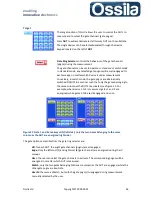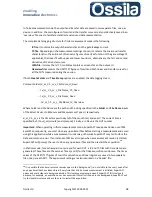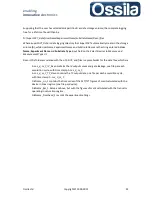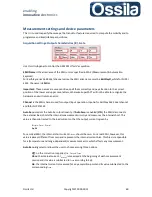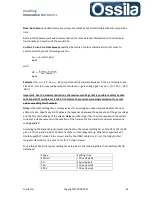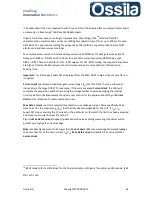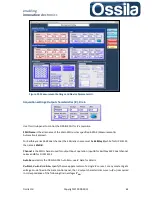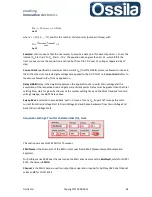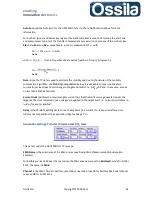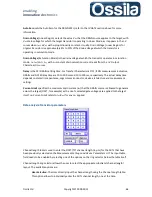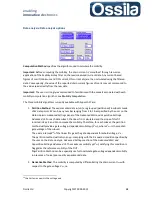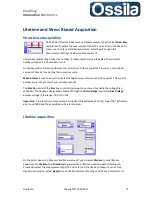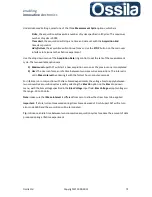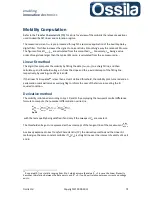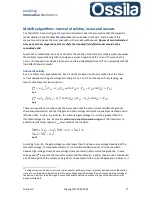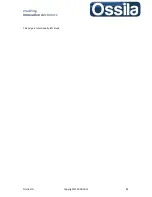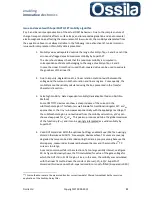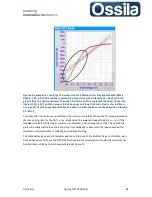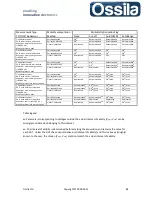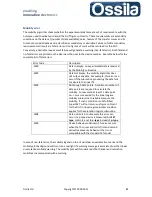
enabling
innovative
electronics
Ossila Ltd
Copyright © 2009-2015
70
Fitting Algorithm
For the
partition
and
linear fit
method,
Fitting Algorithm
specifies which fitting
algorithm to employ to calculate the linear fit
21
. The three available options are
Least Square
Least Absolute Residual
Bisquare
(also known as Tukey's biweight)
If the noise on the measured values (
I
DS,i
) is described by a Gaussian distribution, the Least Square
method should suffice. The Bisquare method is a robust fitting method to be applied if outliers are
present. Outliers are point that lies far away from the majority of the measured data, a phenomenon
that may be caused by short and strong external interferences during the measurement acquisition.
Whereas the Bisquare method is robust against outliers (the resulting Linear Fit does not strongly
depends on few points located far away from the rest of the data set), the Least Square is severely
affected by the these points.
These three options are accessible through the drop-down menu of the
Fitting Algorithm
ring
control.
Tolerance.
The Tolerance (applicable to Least Square and Bisquare method only) determines when
to stop the iterative adjustment of the slope and intercept of the Linear Fit. The Linear Fit is
extrapolated from the data set using iterative methods. At each interaction, the slope and the
intercept of the Linear Fit approaches the Best Linear Fit. If the residual between two iterations is
less than
Tolerance
, the iteration is terminated and the slope and intercept of the resulting Linear Fit
are returned. The minimum value of Tolerance is 0.0001.
Please refer to a statistical data analysis manual/textbook for detailed explanation of the linear fit
theory and common algorithms.
If
Derivative Method
is selected, the
Derivative Algorithm
ring selector replaces
Fitting Algorithm
.
The two available options are now
None
: no smoothing
22
filter is applied to the first derivative
Smooth
(First Derivative): Savitzky-Golay filter is used to smooth
.
Fit Optimisation
enables/disabled specific optimisation routines (flags) associated with the mobility
computation algorithm. These routines are designed to estimate the range of validity of the mobility
equation and to discard figures of merit that are not in conformity with the mobility computation
hypothesis. Refer to
Mobility Algorithms
. Refer to
Mobility Computations
for further details.
21
Do not confuse the algorithm used to calculate the linear fit with the algorithm (method) used to calculate
the mobility. The former refer to the algorithm that the application calls to fit the experimental data to a
straight line (linear fit), while the latter is the method that is employed by the application to pre-process and
handle the data to fit.
22
The drain current is already smoothed during the pre-processing stage of the data analysis routine, and
Derivative Algorithm
control has no effect on this stage.

